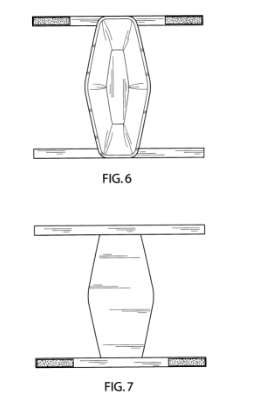Silly Patent-Pillow with retractable umbrella
US 6711769 B1
Abstract: A pillow with a retractable umbrella, comprising a pillow assembly with first and second ends. The first and second ends have a channel extending therebetween. Fixedly secured onto the first end of the pillow assembly is a supporting assembly with third and fourth ends. The supporting assembly has a cavity between the third and fourth ends to store items within, and has a removable end-cap to access the cavity. Extending from the supporting assembly is an umbrella assembly. The umbrella assembly lying within the channel in a stored position. The instant invention having rotating and swivel means for positioning the umbrella assembly while in an erect position. The invention may be stored in a case for easy carrying and in an open position, allows a user to lay his/her head on the pillow while covering their face from sunlight.
In simple terms it is a pillow, with a built-in umbrella to protect the user from the sun. Somehow the idea of having a tanned body and a ghostly white head doesn't appeal to me, but whatever floats your boat. Although this idea is completely ridiculous it combines two different current products, the pillow and the umbrella, and creates a completely new and non-obvious product. Overall, it got passed because no one had done it before and it was not anticipated.
More information here: https://www.google.com/patents/US6711769
FIG. 1 represents a front isometric view of the instant invention in the stored position.
FIG. 1A is a top isometric view of the instant invention taken from the line 1A—1A as seen in FIG. 1.
FIG. 2 shows a front isometric view of the instant invention illustrating the swivel means of the instant invention.
FIG. 3 illustrates a side view of the instant invention with the umbrella assembly in the open position.
FIG. 3A illustrates an isometric view of the supporting assembly and the rotating and swivel means of the instant invention.
FIG. 4 is a perspective view of the instant invention in the open position with the umbrella assembly partially covering a user.











